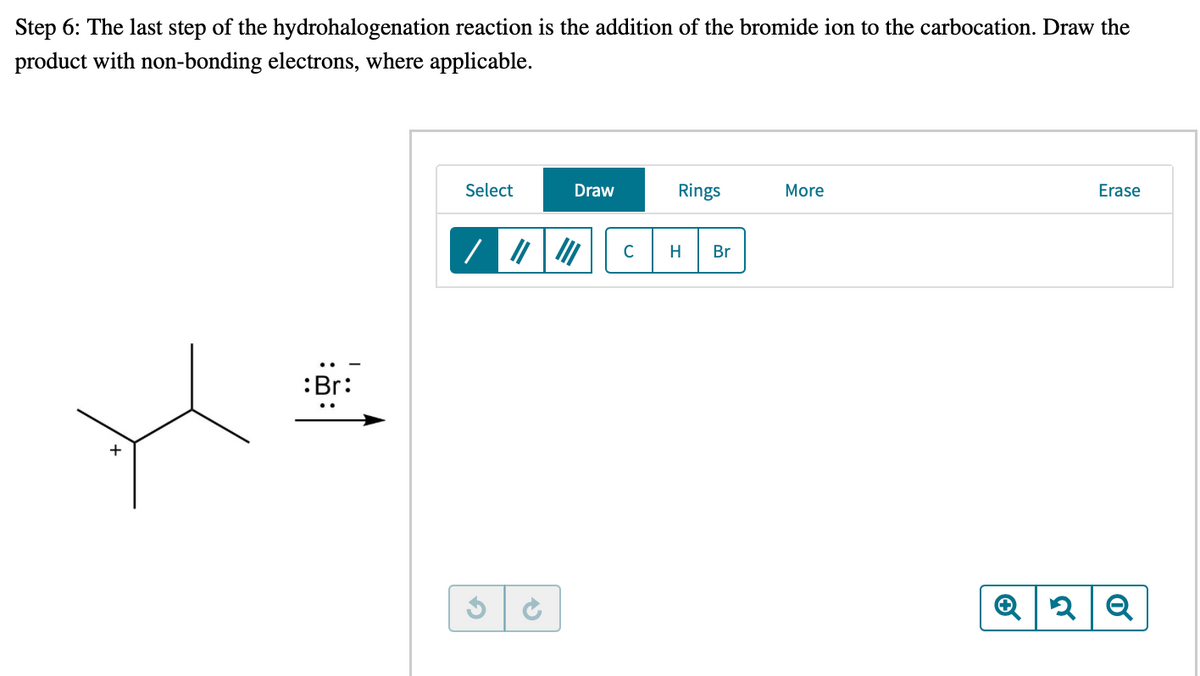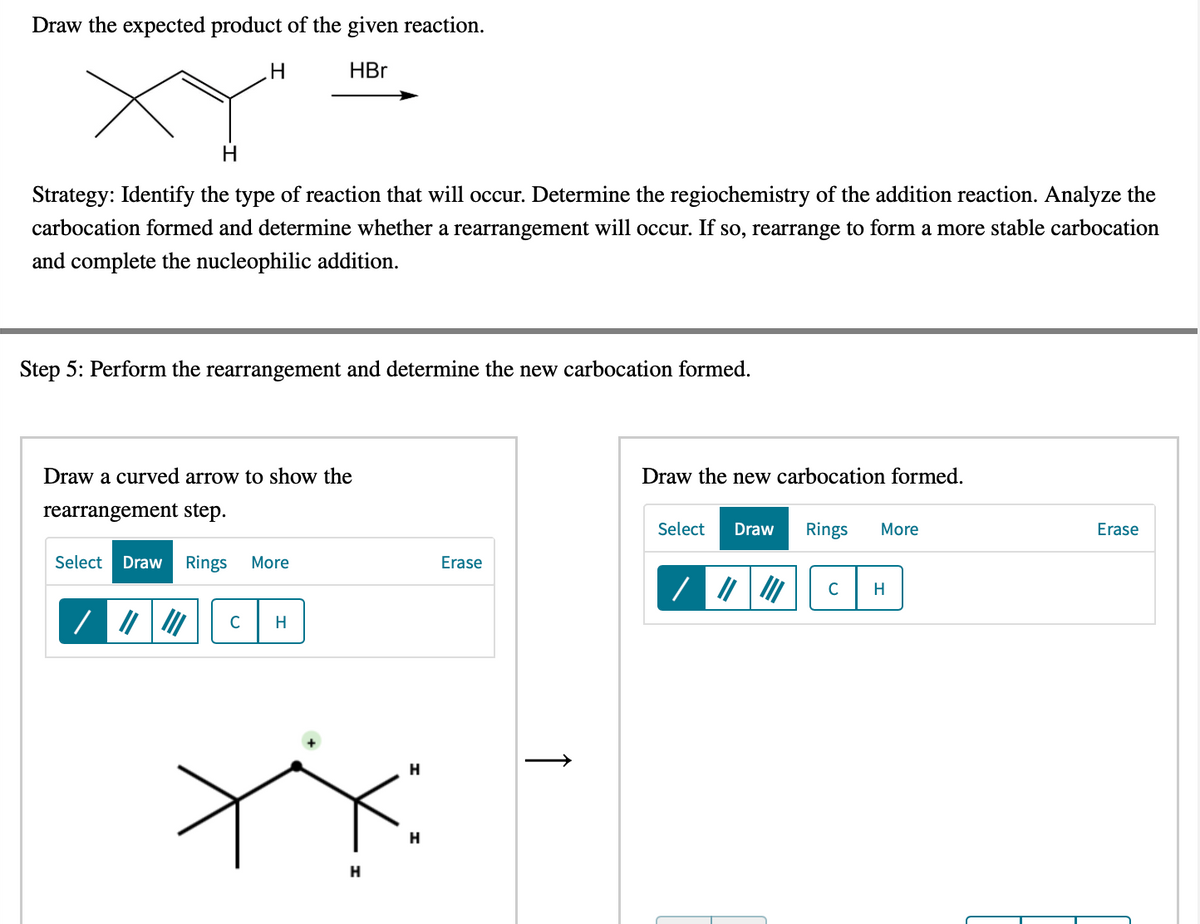Organic Chemistry: A Guided Inquiry
2nd Edition
ISBN:9780618974122
Author:Andrei Straumanis
Publisher:Andrei Straumanis
Chapter21: Nas: Nucleophilic Aromatic Substitution
Section: Chapter Questions
Problem 2E
Related questions
Question
100%

Transcribed Image Text:Step 6: The last step of the hydrohalogenation reaction is the addition of the bromide ion to the carbocation. Draw the
product with non-bonding electrons, where applicable.
Select
Draw
Rings
More
Erase
C
H
Br
:Br:

Transcribed Image Text:Draw the expected product of the given reaction.
HBr
H
Strategy: Identify the type of reaction that will occur. Determine the regiochemistry of the addition reaction. Analyze the
carbocation formed and determine whether a rearrangement will occur. If so, rearrange to form a more stable carbocation
and complete the nucleophilic addition.
Step 5: Perform the rearrangement and determine the new carbocation formed.
Draw a curved arrow to show the
Draw the new carbocation formed.
rearrangement step.
Select
Draw
Rings
More
Erase
Select
Draw
Rings
More
Erase
C
C
H
H
H
H
Expert Solution
This question has been solved!
Explore an expertly crafted, step-by-step solution for a thorough understanding of key concepts.
This is a popular solution!
Trending now
This is a popular solution!
Step by step
Solved in 4 steps with 3 images

Knowledge Booster
Learn more about
Need a deep-dive on the concept behind this application? Look no further. Learn more about this topic, chemistry and related others by exploring similar questions and additional content below.Recommended textbooks for you

Organic Chemistry: A Guided Inquiry
Chemistry
ISBN:
9780618974122
Author:
Andrei Straumanis
Publisher:
Cengage Learning

Organic Chemistry: A Guided Inquiry
Chemistry
ISBN:
9780618974122
Author:
Andrei Straumanis
Publisher:
Cengage Learning